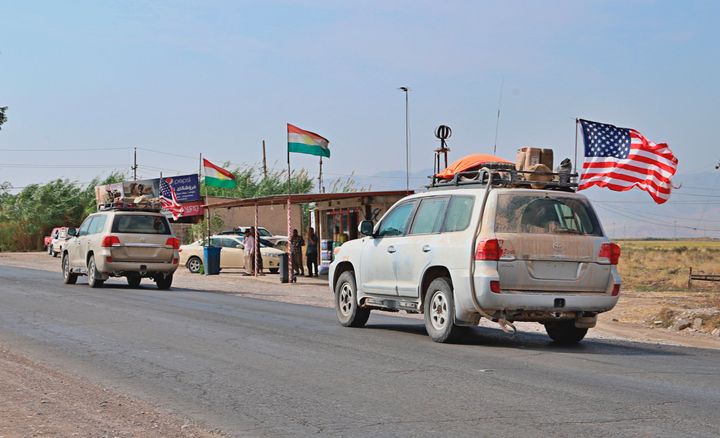US Secretary of Defense Mark Esper disputed a US military letter announcing that troops would be repositioned within Iraq in advance of a potential pullout. Esper claimed he didn’t know where the letter came from and that it was “inconsistent with where we are right now”.
There has been “no decision whatsoever to leave Iraq,” Esper told reporters on Monday, responding to a letter suggesting plans to draw down troop presence in the country.
The letter “was a mistake,” chairman of the joint chiefs of staff Mark Milley told reporters.
The letter was written by General William H Seely III and was addressed to an Iraqi defence official.
“In due deference to the sovereignty of the Republic of Iraq, and as requested by the Iraqi Parliament and the Prime Minister, CJTF-OIR will be repositioning forces over the course of the coming days and weeks to prepare for onward movement,” Seely wrote, referring to a US-led international task force to fight the so-called Islamic State. “Coalition Forces are required to take certain measures to ensure that movement out of Iraq is conducted in a safe and efficient manner.”
The letter was unsigned but US officials confirmed its authenticity and said it had been sent and received by the Iraqis, Washington Post reporter Dan Lamothe wrote on Twitter.
It was written the day after Iraq’s parliament passed a resolution calling on Prime Minister Adel Abdul Mahdi to revoke Iraq’s invitation to host US troops, which have helped the country retake control over territory lost to the Islamic State in 2014. The US currently has about 5,000 troops in Iraq.
“The government commits to revoke its request for assistance from the international coalition fighting Islamic State due to the end of military operations in Iraq and the achievement of victory,” the resolution read.
The non-binding resolution had overwhelming support from Shiite lawmakers, although Sunni and Kurdish members of parliament boycotted the special session.
The vote was a response to the US assassination last week of general Qassem Soleimani, a top-ranking Iranian military commander who was responsible for Tehran’s proxies in Iraq and throughout the Middle East. The US military targeted Soleimani with airstrikes on Baghdad’s airport, a move Shiite politicians in Iraq said violated Iraqi sovereignty.

The vote did not legally require the withdrawal of troops because the parliamentary vote would have had to trigger a meeting by the country’s c cabinet, which cannot meet because there is currently only an acting prime minister and acting cabinet.
But the timing and phrasing of Seely’s letter seemed to imply an effort by the US military to proactively draw down its presence in Iraq as part of an effort to prevent being forced out entirely. “We respect your sovereign decision to order our departure,” Seely wrote in the now-disputed letter Monday.
The removal of troops affiliated with the anti-ISIS task force would not necessarily mean the complete end of the US military presence in Iraq. A spokesperson for the joint task force did not immediately respond to a request for more clarification.
After the Iraqi parliament’s vote, Trump threatened “sanctions like they’ve never seen before” against Iraq if the country forced the US to withdraw its troops.
It is not clear how the Pentagon plans to respond — and the botched messaging around Monday’s letter suggests military officials haven’t yet figured that out.
This article has been updated with statements from the US Defense Department disputing the drawdown mentioned in the letter and with more details on the parliament vote.